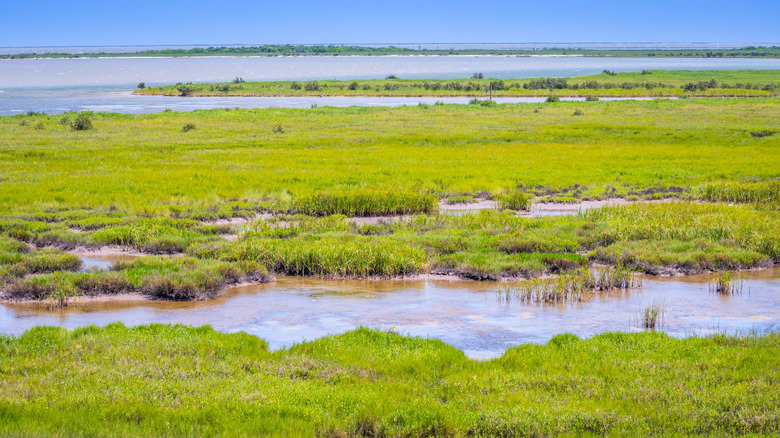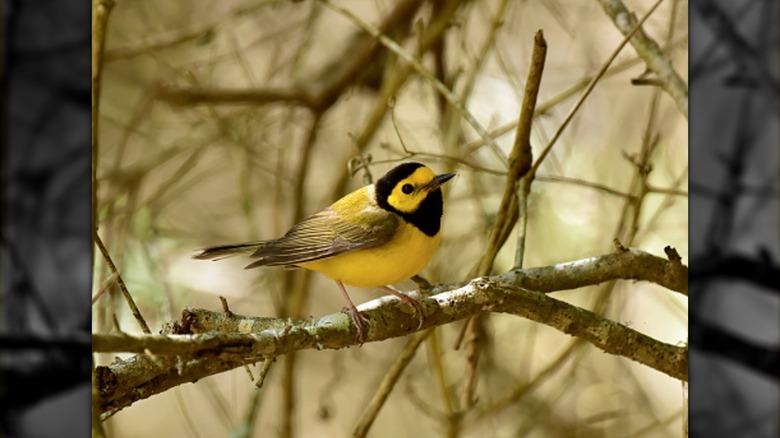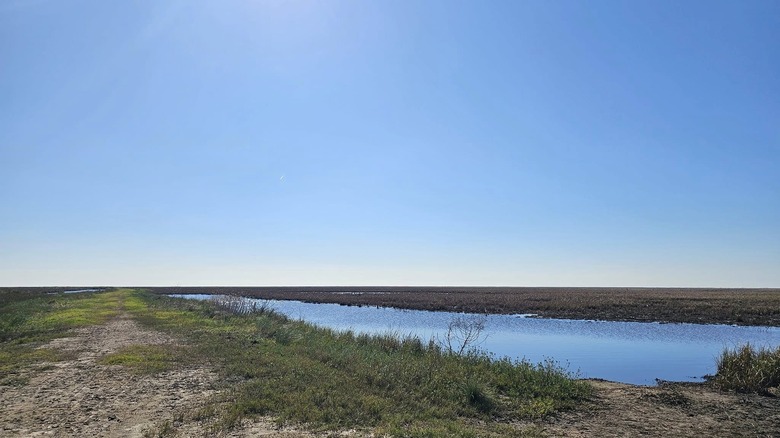Texas' Wildlife Refuge Right On The Gulf Coast Is A Birdwatching Paradise With Plenty Of Hikes And Lookouts
Coastal plains riddled with dense forests and marshy bayous all but dominate the southeast corner of the Lone Star State. There, nature roams wild, and a watercolor of blues and greens stretches for about as far as the eye can see, from the Big Thicket Preserve, one of Texas' most underrated national sites for its swaths of cypress trees and native critters, to the great Sea Rim, an unsung Texas state park where you can camp at the beach. If you venture on up the Gulf Coast for a few miles, you can see another colorful slice of outdoor paradise: the Texas Point National Wildlife Refuge.
Open 24 hours each day, this natural nook of the state lies about two hours east of Houston's George Bush Intercontinental Airport (IAH) in the city of Port Arthur. You can hunker down there during your Texas excursion, where you'll find a bevy of hotel options, from prominent brands such as the Holiday Inn, Hampton Inn & Suites, and Home2 Suites by Hilton to boutique inns like the vintage Aurora Bed & Breakfast.
The Texas Point National Wildlife Refuge hugs the lapping waters along the Louisiana border, where the Sabine Lake spills out into the Gulf of Mexico (renamed the Gulf of America in 2025 by U.S. President Donald Trump). The nearly 9,000-acre expanse of coastal marsh habitat is chock full of shallow lakes and ponds, with several scenic lookouts and hiking trails woven throughout. The park is Texas' very own Garden of Eden, teeming with beasts of the field and fowls of the air, so you'll have plenty of opportunities to get in a bit of animal and bird gazing along the way.
The beasts and fowls of Texas Point
Fancy an afternoon of birding? If you're on the prowl for some of the best birdwatching destinations in the U.S., look no further than the Texas Point National Wildlife Refuge. The park was created in the late 1970s by the Migratory Bird Conservation Commission, a federal agency that oversees the purchase or rental of land and water areas to serve as habitats for migratory birds. Tuckered out from their cross-country journeys and eager for a safe place to rest their weary wings, an array of roving birds find the park's perch-friendly coastal woodlots especially enticing during their spring migration.
The region is home to upwards of hundreds of bird species throughout the year, from the small yet feisty wrens to the well-camouflaged nightjars. So, be sure to grab your binoculars and print out a checklist from eBird, an online database of bird sightings, to see how many feathered fowl you can find.
The surrounding marshlands are also a draw for other wildlife species, both migratory and native, serving as an ample abode for feeding, breeding, and nesting. "If you plan on visiting, early morning and late afternoon are the best times to see wildlife on the refuge," the Texas Forest Trail Region, part of the Texas Heritage Trails Program, a regional tourism initiative of the Texas Historical Commission, recommended on Facebook. And yes, you may even spot a few armored beasts in the form of alligators during your trip. So be prepared, and steer safely clear.
Keep calm and hike on
You'll find a trio of hiking trails to roam in the Texas Point National Wildlife Refuge. The three trailheads can be found right off the main paved parking area, which is accessible via Highway 87, also known as South Gulfway Drive. And with names like the Birding, Watchable Wildlife, and Cattle Walk Trails, you better have your cameras ready. The first two paths are both incredibly short, each spanning only about a tenth of a mile. The third, Cattle Walk, is a bit longer, stretching through the refuge for just shy of 2 miles.
"Easy levee hike through the marsh," Carl Sonnier wrote on Facebook about his ramble along the trail. He did caution that there isn't any shade along the path, so you'll want to bring along water and wear the proper attire to protect yourself from the elements. According to eBird, Cattle Walk Trail is a major birding hotspot in the park, so if you're keen on catching sight of winged critters, that'll be your best bet.
Just keep in mind that the views are quite swampy. "Not too much to see on this trail but marsh, marsh and more marsh," Missy LeBlanc Ivey penned on Facebook. On the flipside, she said the trail is well-marked. "But I wouldn't hike this after a recent rain," she added. "The ground could be gumbo and make for a miserable hike. Today, we enjoyed it. This is probably a birder's paradise in the spring. We saw quite a few variety of birds." As always, leave no trace, and enjoy the view.


